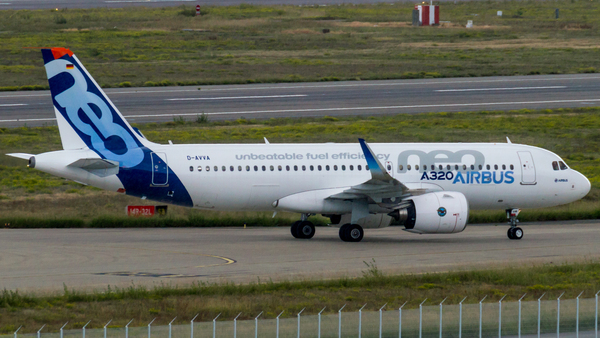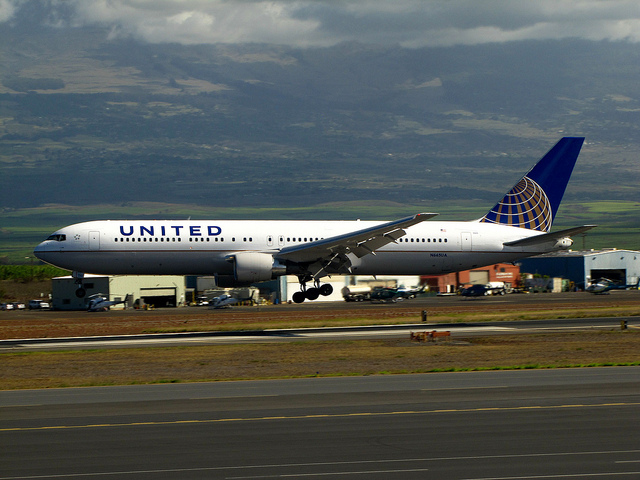Lionair B739 at Pekanbaru on Feb 14th 2011, runway excursion on landing
Last Update: July 22, 2013 / 15:34:56 GMT/Zulu time
Incident Facts
Date of incident
Feb 14, 2011
Classification
Incident
Cause
Runway excursion
Airline
Lion Air
Aircraft Type
Boeing 737-900
ICAO Type Designator
B739
The aircraft was decelerated according to the preselected value until the thrust reversers stowed which was known at the last 1000 feet of the runway available and the aircraft speed approximately 70 knots. According performance calculation the aircraft should be able to stop on the remaining runway available. The failure of the aircraft to stop most likely due to the significant deterioration of both the runway friction and brake effectiveness as result of the existing of the combination of the rubber deposit and water spots.
The NTSC reported the aircraft was on approach to Pekanbaru when the crew observed a cumulo nimbus cloud forming over the holding point for Pekanbaru, weather information was heavy rain with visibility of 1km at the aerodrome. The crew therefore decided to enter a hold and wait for the weather to improve. After flying two racetracks the weather improved and the crew decided to commence an ILS approach to runway 36. The aircraft broke out of cloud just before intercepting the glidepath, tower reported winds were calm and cleared the aircraft to land, at that point the crew observed about 11-12 knots tailwind on their flight management computer. Flaps were set to 40 degrees and autobrakes were set to 3.
Following touchdown the crew performed normal landing procedures, deployed thrust reversers, checked spoilers had extended and auto brakes had engaged. However, no significant deceleration was felt by the crew, the flight data recorder showed however that deceleration occurred on target of -0.224G as commanded by autobrakes. The crew began to apply maximum manual braking below 90 knots and stowed the thrust reversers below 70 knots. Below 70 knots the deceleration according to FDR reduced to -0.1G.
About 1000 feet short of the runway end the aircraft slowed through 50 knots, normally that distance would be sufficient to stop the aircraft, the lack of braking efficiency however suggested a problem with the braking coefficient of the runway, the NTSC later analysed: "The maximum manual braking, according to the Boeing manual may produce longitudinal acceleration more than -0.435 G. The manual brake applied up to maximum; however, the rate of deceleration was decreasing. Boeing data retrieved from the DFDAU also found that Calculated Airplane Braking Coefficient was decreasing to average of -1.5. This indicated that the runway friction, which was one of the factors of stopping distance, was ineffective for aircraft deceleration."
The runway was covered by spots of water up to 3cm (more than one inch) deep as well as rubber deposits seriously degradating braking action.
The aircraft went past the runway end and came to a stop on the paved runway end safety area, however the right main gear had gone off the right hand side of the pavement. Immediately after the aircraft came to a stop the commander ordered "all crew on station", after assessing the situation he instructed "aircraft is under control" cancelling a possible evacuation. The passengers disembarked via mobile stairs about 20 minutes later.
The NTSC reported that the flight data recorder revealed the aircraft experienced a tail wind component of 8 knots at the time of touch down and analysed: "Prior to land the pilot received information from the Tower controller that the surface wind was calm. The pilot saw on the FMC that the wind was around 11 knots. The FDR data retrieved that the surface wind condition was tail wind up to 8 knots. The discrepancy of the surface wind data might arise from the fact that the location of the anemometer was surrounded by vegetation and building which might generates turbulence that might cause reading inaccuracy. Based on this condition it can be concluded that the wind speed report from the Tower controller might be incorrect. The incorrect wind information to the pilots may affect to the pilot decision and flying technique."
Incident Facts
Date of incident
Feb 14, 2011
Classification
Incident
Cause
Runway excursion
Airline
Lion Air
Aircraft Type
Boeing 737-900
ICAO Type Designator
B739
This article is published under license from Avherald.com. © of text by Avherald.com.
Article source
You can read 2 more free articles without a subscription.
Subscribe now and continue reading without any limits!
Read unlimited articles and receive our daily update briefing. Gain better insights into what is happening in commercial aviation safety.
Send tip
Support AeroInside by sending a small tip amount.
Related articles
Flight Crew Relocation Checklist: Everything International Aviation Workers Need Before Landing a U.S. Job
Moving to the United States for an aviation job is exciting, but it’s also a lot to manage. You’re not just preparing for a new…
Analytics in the Cockpit: How Denis Krainov Turns Flight Data Into Safer Operations
Image: Denis Krainov | LinkedIn Each flight generates data that extends beyond altitude and speed. Within every flight lies information that helps…
AeroInside Monthly Aviation Safety Review October 2025
October 2025 was a busy month in aviation safety. Please find our summary below.All in all, 62 new articles have been published during last month. 5…
How to Prepare for Flights to Asia: Key Packing Tips
Asia, especially its south-eastern part, is among the world's most beautiful and thrilling destinations. You can experience it all, from cultures and…
How Fast Track Services at JFK Airport Can Save You Time and Stress
Discover how JFK Airport fast track services can save you 60+ minutes and reduce travel stress. Learn about expedited security, customs, and…
Newest articles
India A20N at Delhi on Nov 27th 2025, cargo smoke indication
An Air India Airbus A320-200N, registration VT-EXO performing flight AI-2939 from Delhi to Ahmedabad (India) with 170 people on board, was climbing…
United B763 near Boston on Nov 27th 2025, airspeed indication problem
A United Boeing 767-300, registration N665UA performing flight UA-934 from Newark,NJ (USA) to London Heathrow,EN (UK), was enroute at FL300 near…
Subscribe today
Are you researching aviation incidents? Get access to AeroInside Insights, unlimited read access and receive the daily newsletter.
Pick your plan and subscribePartner

ELITE Simulation Solutions is a leading global provider of Flight Simulation Training Devices, IFR training software as well as flight controls and related services. Find out more.
SafetyScan Pro provides streamlined access to thousands of aviation accident reports. Tailored for your safety management efforts. Book your demo today
AeroInside Blog
Popular aircraft
Airbus A320Boeing 737-800
Boeing 737-800 MAX
Popular airlines
American AirlinesUnited
Delta
Air Canada
Lufthansa
British Airways


